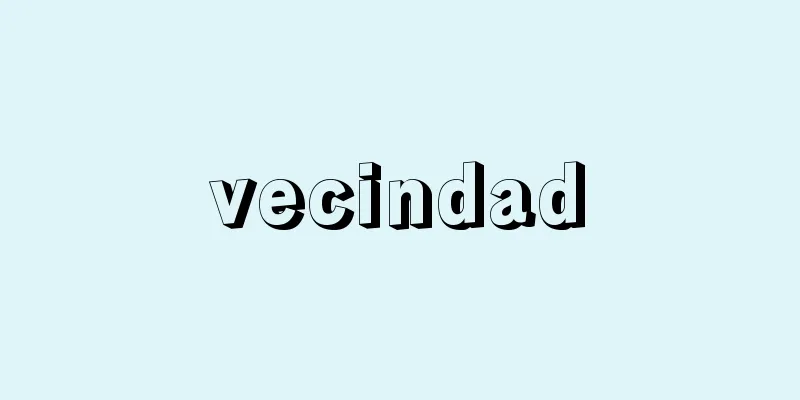Underground transportation - Kounai Unpan

|
The task of transporting mined ore and coal outside the mine, and transporting machines and materials required for various operations inside the mine to the work area. In mines, mined ore and coal are transported from the face through the gate and main tunnel to the bottom of the inclined shaft or vertical shaft, from where they are transported outside the mine. Materials are brought in the opposite direction. In addition, handcarts are used for workers to enter and go up the mine. In coal mines, double or triple chain scraper conveyors (commonly known as panzer conveyors) with sturdy troughs (iron treads) that act as guides for the mining machines are used within the face. A belt conveyor is used from near the face to the main tunnels, where the coal is transferred to ore cars (coal cars) and transported by locomotive. In addition to battery-powered and overhead line electric locomotives, explosion-proof diesel locomotives and pneumatic locomotives are also used for transport in exhaust tunnels. There are two methods of transporting ore cars in horizontal tunnels: endless and tail rope. In some mines, trackless transportation is carried out near the face using trackless vehicles such as shuttle cars and scooptrams, but there are also examples of completely trackless transportation in metal mines, where trucks are used in the inclined shaft to transport the cars to the outside of the mine. Inclined shaft transportation, there are two methods: course winding, where a track is laid and the ore cars are wound up as trains, and skip winding, where the cars are transferred to skips. Pockets are set up inside the mine at the transfer point to the skip, and a tipler is used to empty the ore cars into the pocket. In both horizontal and inclined shafts, guide rollers (also called road cars) for the rope are set up at regular intervals inside the tunnel when transporting the rope. In inclined shafts, ore and coal are often transported by belt conveyors; at one time cable belt conveyors were used, but now high-tension belts with steel bars are used. Some coal mines use a trackless system, where belt conveyors are used all the way from near the face to outside the mine. For transporting in a shaft, there are two types: cage winding, in which the ore or coal is loaded on the ore car and then placed on a cage and wound up, and skip winding, in which the ore or coal is transferred to a skip. There are also two types of winches: Köpe winding, in which a rope attached to a sheave (Köpe wheel) is raised and lowered with a cage or skip attached to both ends, and drum winding, in which the rope is wound onto a drum. Köpe winding is more advantageous when the shaft is deep, and a tail rope is lowered under the cage or skip to balance the moment. A hoisting tower for the sheave is erected above the shaft entrance, and a guide is installed inside the shaft to prevent the cage or skip from swinging. The safety factor for the load of wire rope is regulated by law. In addition, hydraulic and pneumatic transport via pipelines has long been used to transport filler materials, and more recently these methods have also been used for unloading coal. [Yoshiaki Watanabe] Source: Shogakukan Encyclopedia Nipponica About Encyclopedia Nipponica Information | Legend |
|
採掘した鉱石や石炭などを坑外に搬出したり、坑内の諸作業に必要な機械、材料などを作業場に搬入する作業。鉱山では、採掘した鉱石や石炭などを切羽(きりは)からゲート、主要坑道を経て斜坑底もしくは立(たて)坑底へ送り、そこから坑外へ搬出する。資材類はその逆の経路で搬入される。このほか作業員が入昇坑するための人車も用いられる。 炭鉱の場合に、切羽内では採炭機のガイドの役をする頑丈なトラフ(鉄製樋(とい))をもつダブルチェーンもしくはトリプルチェーンのスクレーパーコンベヤー(俗称パンツァーコンベヤー)を使う。切羽近くから主要坑道まではベルトコンベヤーにより、主要坑道では鉱車(炭車)に積み換えて機関車運搬をすることが多い。坑内機関車には蓄電池式や架線式の電気機関車のほか防爆型ディーゼル機関車や、排気坑道の運搬には圧気動機関車も使用する。 水平坑道運搬に、巻綱(ワイヤロープ)を使って鉱車を運搬する方法にエンドレス巻とテールロープ巻とがある。一部ではシャトルカーやスクープトラムのような無軌道車両を使うトラックレス(無軌道)運搬を切羽近くで行っているが、金属鉱山で斜坑にトラック(自動車)を使い坑外まで運ぶ完全トラックレス化の例もある。 斜坑運搬では、軌道を敷設し鉱車を列車のまま巻き上げるコース巻と、スキップに積み換えるスキップ巻とがある。スキップへの積み換え箇所には坑内ポケットを設け、鉱車からポケットへの荷あけにチップラーを使う。水平、斜坑いずれの場合にも巻綱運搬では、坑道内に一定間隔で巻綱のためのガイドローラー(道中車ともよぶ)を設置する。斜坑では鉱石や石炭はベルトコンベヤーで運ぶことも多く、一時ケーブルベルトコンベヤーを使ったが、現在では鋼条入りの高張力ベルトを使用している。炭鉱によっては、切羽近くから坑外まですべてベルトコンベヤーを中継して運ぶトラックレス方式を採用しているところもある。 立坑運搬には、鉱石や石炭を鉱車に積んだままケージに載せて巻き上げるケージ巻と、スキップに積み換えるスキップ巻とがある。さらに巻上げ機には、綱車(ケーペ車)にかけた巻綱の両端にケージやスキップをつけて上下させるケーペ巻と、巻綱を巻胴(ドラム)に巻き取るドラム巻の2種類がある。立坑が深くなるとケーペ巻のほうが有利であり、ケージやスキップの下にはモーメントをつり合わすためテールロープ(尾綱)を下げる。立坑口の上には綱車のための巻上げ櫓(やぐら)を立て、立坑内にはケージやスキップの振れ止めにガイド(すらせ)を取り付ける。巻綱(ワイヤロープ)には荷重に対する安全率が法規で定められている。 このほか充填(じゅうてん)材の搬入には、古くからパイプラインによる水力輸送や空気力輸送が行われており、最近では揚炭にもこの方法が利用されている。 [渡辺慶輝] 出典 小学館 日本大百科全書(ニッポニカ)日本大百科全書(ニッポニカ)について 情報 | 凡例 |
>>: Cultivation in soil - Koudobaiyo
Recommend
Syntax
〘noun〙 (syntax)⸨syntax⸩① A branch that studies the...
Enshoji Temple
A Tendai sect temple located near Okazaki in Sakyo...
Phuket [island] - Phuket
A small island on the west coast of the Malay Peni...
Manson, C. (English spelling)
…But each of them has become a driving force in A...
Disbandment Order - Kaisan Mei Ray
An order for the dissolution of a company issued b...
Tagajo [city] - Tagajo
Located in central Miyagi Prefecture, between the ...
Champagne, P.de (English spelling) ChampagnePde
… French painter born in Brussels. Also known as ...
sweet William
...Many of them have small, pretty pink flowers. ...
Thymopoietin
…They come from the bone marrow, reside here, and...
Environmental layer
… Such cultural environments can be divided into ...
Sequoiadendron giganteum (English name) Sequoiadendrongiganteum
…The heartwood is bright red or reddish brown and...
Farmers' Alliance
A general term for farmer groups that gained influ...
Ahmad Shawki
… [Modern and contemporary literature] Modern lit...
Higher Education
It is an education that builds on the foundations...
Ekaja - Ekaja
...The three highest varnas were called the rebor...
![Väner [Lake] - Väner](/upload/images/67ccca7445631.webp)








